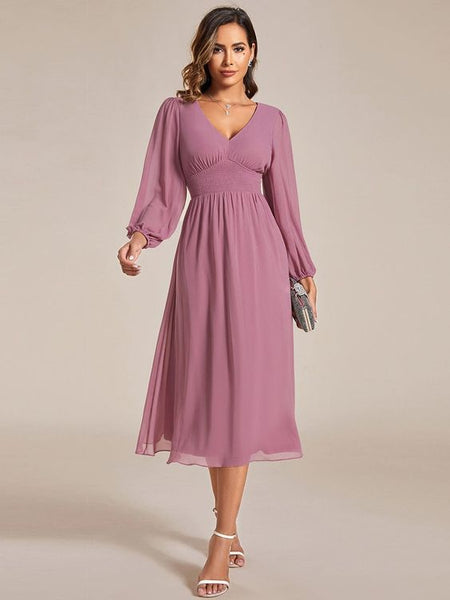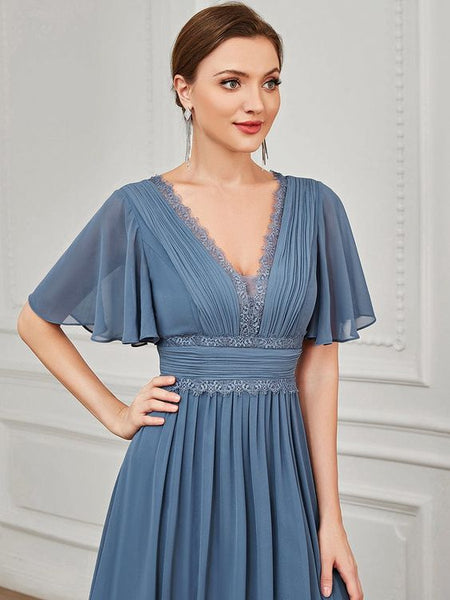What is Chiffon Fabric?
Chiffon – the very word evokes images of lightweight, flowing fabrics. As one of the most delicate and exquisite textiles today, chiffon fabric is admired for its soft, airy texture. With its slightly rough feel, this semi-sheer fabric is a popular choice for dresses, dupattas, scarves, ribbons, sarees, lehengas and other fineries.
Ancient Roots of Chiffon Fabric
The history of chiffon fabric can be traced back over two thousand years in ancient China. While several civilisations still draped heavy fabrics, Chinese weavers had already mastered the art of creating the finest lightweight silks.
Chiffon evolved as a variation of these sheer silk textiles that clothed Chinese nobility for centuries. Intricate hand-woven techniques were passed down through generations as weavers experimented with indigenous silk yarns.
Chinese Origins of Silk
The production secrets of filmy silk gauzes actually originated even earlier during China's Han dynasty, circa 206 BC to 220 AD. These early ancestors of chiffon fabric were fashioned from silk harvested from wild silkworms feeding on lush white mulberry leaves.
For generations, fine silk yarns were crafted using innovative reeling and weaving techniques to make chiffon fabric. Chinese silk weavers became renowned for creating gossamer, thin yet strong fabrics ideal for refined silk chiffons.

Emergence of Chiffon as a Silk Variation
Regal transparent silks emerged as a distinctive textile during the Song dynasty. Chiffon history shows how weavers could manufacture exceptionally refined and dainty silk fabrics with improved silk reeling methods.
Chiffon developed as a more flexible offshoot of these ultra-fine imperial silks woven from superbly reeled silk threads using complex models. The resulting textiles had a soft, flowing drape which continues to define chiffon even today.
Influence of Ancient Chinese Weaving Techniques
The foundations of delicate silk chiffon lies in the ancient Chinese silk weaving traditions, preserved over centuries. Exquisite sheer silks could only be made possible by perfecting multi-harness weaving, spinning fantastic uniform threads, and silk harvesting.
Chiffon continues to retain the look and feel of these imperial Chinese textiles. Though modern synthetic yarns have replaced silk, the weaving technique still lends the same lightweight quality and soft billowy texture recognised globally today as chiffon.
Silk Route Influence
Originating in the Middle East, chiffon became prized along the Silk Road for its lightweight, translucent nature. Chinese traders brought the fine fabric along the route, spreading its popularity in Europe. Chiffon found a niche as a luxurious import, coveted by the elite.
Renaissance and European Elegance
During the Renaissance, Italian nobility embraced chiffon, transforming it into a symbol of refinement. Lighter than imported silk and easy to dye, chiffon came to signify wealth and indulgence—extensive embroidery and beading elevated basic chiffon into elaborate fashions conveying status. Kings and queens popularised the fabric across royal courts of Europe.

20th Century Innovation
Modern synthetic fibres enabled the mass production of affordable chiffon in the early 1900s. Machine-woven chiffon became widely accessible, driving new heights of creativity for designers worldwide. Its versatility sparked experimentation with layering different chiffon styles for innovative textures.
Chiffon in Modern Fashion
Chiffon remains a staple fabric in high fashion for its dreamy, ethereal effect. Red carpet dresses feature cascades of ruffled or draped chiffon. Top designers like Dior and Gucci incorporate light, flowing chiffon in gowns, blouses and skirts to add dimension. Sheer chiffon layered over bright camisoles or swimsuits creates stylish peek-a-boo looks. Both glamorous and romantic, chiffon continues to retain its allure in women's wear.
Significance of Chiffon in the Textile Industry
Chiffon textile’s rise from rare luxury import to affordable, ubiquitous fabric highlights its versatility and lasting appeal. Its many unique properties spawned new creative possibilities that still inspire fashion today. Chiffon's commercialisation enabled more inclusive access. As a transformative textile once constrained by limited supply and high cost, now you can get chiffon fabric online. It has demonstrated how innovation can democratise fine materials.
Frequently Asked Questions
1. What are the features of chiffon fabric?
Ans: Chiffon is a lightweight, translucent fabric with a delicate, soft drape and texture. The gauze-like weave creates a sheer, airy appearance. Chiffon provides movement and billows easily, lending an ethereal, dreamy quality popular for scarves and dresses.
2. Where did chiffon fabric originate from?
Ans: The origins of chiffon lie in the Middle East, where the luxurious silk fabric was highly valued. Chinese traders brought chiffon West via the Silk Road, introducing it to Europe. Italian nobility popularised the fabric during the Renaissance as a symbol of indulgence and status.
3. What is the source of chiffon?
Ans: Traditionally made from silk, modern chiffon is often crafted from synthetic fibres like polyester and rayon. This allows more affordable mass production while retaining its delicate texture. Silk chiffon remains prized for its unparalleled softness and elegance.
4. What are the advantages of chiffon fabric?
Ans: Key advantages include its lightweight, breathable nature, perfect for scarves and airy gowns. The fluid drape and ease of manipulation make it favoured for ruffles, pleats and billowy shapes. Sheer chiffon layered over camisoles or swimsuits creates stylish peek-a-boo looks and added dimension.
 Call Us
Call Us

